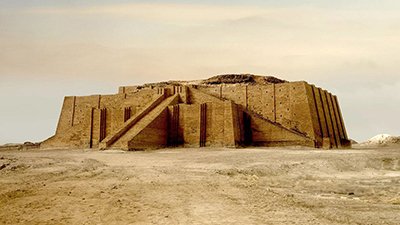How Many Times Was Jesus Anointed?
When we hear of alleged Bible contradictions, and then carefully examine the passages in question, we find that they are not really contradictions at all. One such supposed contradiction is that the Gospel accounts seem to indicate that Jesus was anointed before and after the Triumphal Entry. If the Gospels are recording a single event, then this would indeed be problematic, but that is not the case. In this article, we’ll examine the four accounts in Matthew, Mark, Luke, and John and demonstrate that there was not a single anointing of Jesus for his burial, but two or even three separate occasions of a woman anointing Jesus, and the first one was not done as a memorial for his burial.
The First Anointing
Chronologically the first anointing of Jesus occurs in Luke 7:36–50.
Chronologically the first anointing of Jesus occurs in Luke 7:36–50.1 This account is different from the somewhat similar passages in Matthew, Mark, and John. Let’s review the facts as recorded in this passage:
- This event occurred in the house of Simon the Pharisee who lived somewhere in Galilee, probably Capernaum, Nain, or Cana. From the context, Capernaum appears most likely as Jesus had just healed the widow’s son in Nain (Luke 7:11–16). Then, apparently shortly thereafter, John the Baptist’s disciples came to him (Luke 7:19–23, cf. Matthew 11:1–6), and afterward, Jesus gave a brief discourse about John the Baptist (Luke 7:24–35, cf. Matthew 11:7–19). And in the Matthew account, he specifically upbraided Capernaum last (Matthew 11:23–30) and it seems that at this time Simon the Pharisee invited Jesus and his disciples to come for dinner.
- John the Baptist was still alive, so this event apparently occurred at least two years before the Crucifixion. John’s death is recorded in Matthew 14:10, Mark 6:27, Luke 9:9 sometime during the first of the presumed three-year ministry of Jesus. The Bible does not tell us precisely how long the Lord’s earthly ministry lasted. The popular view of three years is based on the number of Passovers described in John’s Gospel, but his ministry could have been shorter or longer than three years.
- The woman is noted as a sinner, possibly a euphemism for a prostitute, and is also unnamed.
- She apparently approached Jesus from behind, knelt down, broke open the flask, and began crying. She wiped his feet with her hair, cried while doing so, and then anointed Christ’s feet with the fragrant oil (no mention is made of anointing his head).
- None of the disciples objected at the cost of the ointment at this anointing, but Simon the Pharisee was upset that Jesus would allow a notorious sinner to touch him.
- Jesus talked about and directly to this woman and forgave her sins.
The Second Anointing—Just Before the Triumphal Entry
The next account chronologically is the one in John 12:1–8. It is quite different from Luke’s account and very similar to Matthew’s and Mark’s in many respects, but also different in some details. Let's review the details as recorded in this passage:
- This event apparently occurred in the house of Lazarus, Mary, and Martha in Bethany.
- It happened six days before the Passover (and a few days before the Triumphal Entry) and fits well with the timeline of the Matthew and Mark account which apparently occurred four days later in the same city.
- The woman who anointed Jesus’ feet was Mary, the sister of Lazarus and Martha.
- Mary anointed and then wiped Jesus’ feet with her hair, but there is no mention of her crying, either before or during the time she is anointing Jesus’ feet with the spikenard oil.
- It seems that only Judas was upset at Mary for this perceived waste of money, and only because, secretly, he was a thief.
- Apparently out of respect for Mary (and Martha and Lazarus, whom they all knew) the other disciples did not dare speak up and rebuke Mary, yet they did so four days later to an unknown woman. It may be that Judas grumbled about this “extravagance” for days and “poisoned” the disciples’ perceptions, so that four days after the anointing, they began to reason that it was wasteful, and verbally complained.
The Third Anointing—After the Triumphal Entry and Just Before the Crucifixion
Both the Matthew 26:6–13 and Mark 14:3–9 accounts are the same and record the last anointing of Jesus chronologically. Let's review the facts as recorded in these two passages:
This anointing occurred after the Triumphal Entry and two days before the Passover, just before Christ was crucified.
- This event occurred in the house of Simon the Leper in Bethany. Some have tried to reconcile the Matthew and Mark accounts with the Luke account due to the host’s name being Simon. But a leper, or even a cleansed leper, would not have been accepted as a Pharisee, so this is clearly a different Simon than the one in Luke’s account. Plus the dates and cities are different, as mentioned above.
- This is the only account where Jesus’ head (and not his feet) was anointed. An unnamed woman broke an alabaster box of fragrant oil (in some versions called “ointment”) and poured it on Jesus’ head. Mark identifies it as spikenard.
- It appears that the woman approached Jesus from the front before she broke the box open.
- Jesus talked about her but apparently does not speak directly to her. He mentions that her act will be told as a memorial wherever the gospel is preached. For those who have tried to reconcile this account to be the same as the one recorded in John, it is highly unlikely that Jesus would not mention her name or talk directly to her if this were Mary, the sister of Lazarus. And again, the circumstances here are different, the woman here anointed Jesus’ head, not his feet, and did not use her hair to do so.
- Some of the disciples are upset over the cost of this, and more than one vocally objected. Jesus had to rebuke them for their attitudes.
- This anointing occurred after the Triumphal Entry and two days before the Passover, just before Christ was crucified.
Another Possible Solution
Due to the many similarities in the accounts by Matthew, Mark, and John, many researchers prefer a different solution than the one proposed above.2 They believe these three Gospels tell of the same event. Consider the following similarities:
- The ointment was apparently worth the same amount (300 denarii) in the accounts and some people in the room object to the act.
- Matthew and Mark speak of the disciples being indignant while John specifies that Judas voiced his objection.
- The Lord’s response to the disciples and Judas is practically the same in each account, although His response in John is shorter. He tells them that they will always have the poor with them and to leave her alone because her act is related to his burial.
According to this potential harmonization, John correctly states that this event took place in Bethany six days before the Passover. Matthew and Mark do not specifically state when the event took place. In these two Gospels, it follows a discussion of the plotting of the Jewish leaders to arrest and execute Jesus, a discussion that was said to take place two days before the Passover. According to this proposed solution, Matthew and Mark parenthetically refer to the account of the anointing four days earlier before resuming the narrative of Christ’s betrayal by Judas in Matthew 26:14 and Mark 14:10.
Gospel writers were under no obligation to present details chronologically (except for those areas where they reveal they are doing this), so this part of the scenario is plausible. However, this raises other difficulties. For example, Matthew and Mark clearly state that this act took place in the house of Simon the Leper, while John mentions that Martha took part in serving the meal, which seems to imply that it took place at the home she shared with Mary and Lazarus. Yet, it is possible that Simon the Leper invited Jesus and his followers over for a meal and Martha assisted with serving the meal at his place. Also, this view would require that the Lord’s head and feet were anointed during this time since Matthew and Mark speak of his head being anointed while John focuses on the Lord’s feet being anointed.
Different Circumstances, Different Dates, and Different Accounts
The anointing in Luke is almost certainly a different event than the anointing(s) described in Matthew, Mark, and John. At least two plausible solutions to the alleged contradiction have been detailed above. I think the first option makes better sense, but either option shows that the passages do not contradict each other.
The details of all three accounts differ significantly, and not because of any contradiction, but because there were likely three different anointings of Jesus.
If the first option is correct, then Jesus was anointed twice before the Triumphal Entry into Jerusalem and once afterward. The three anointings took place in three different houses, in two different cities, and the first event was probably about two years before the last two events (which were four days apart). The details of all three accounts differ significantly, and not because of any contradiction, but because there were likely three different anointings of Jesus. Twice his feet were anointed, and at the last anointing, his head was covered in fragrant oil of spikenard.
During the last two anointings, Jesus mentioned that they were done for his burial, but there is no such statement by Jesus in the Luke account. Rather it seems that the anointing was done by the woman as a love and thanksgiving offering, and Jesus forgave her sins. Once again, the apparent contradictions melt away when the passage or passages are studied in more detail, and in context. In this case, the “contradiction” arises because the anointing passages are conflated or forced into a single account when they don’t belong together.
Footnotes
- All Scripture quotations come from the New King James Version (NKJV).
- For example, see Ben Witherington III, The Gospel of Mark: A Socio-Rhetorical Commentary (Grand Rapids, MI: Eerdmans, 2001), 365.
Recommended Resources

Answers in Genesis is an apologetics ministry, dedicated to helping Christians defend their faith and proclaim the good news of Jesus Christ.
- Customer Service 800.778.3390
- Available Monday–Friday | 9 AM–5 PM ET
- © 2025 Answers in Genesis





